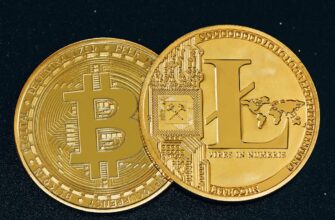- What is a Cryptocurrency Kiosk?
- How Do Cryptocurrency Kiosks Work?
- The Benefits of Using a Cryptocurrency Kiosk
- Where Can You Find Cryptocurrency Kiosks?
- How to Use a Cryptocurrency Kiosk: A Step-by-Step Guide
- Potential Drawbacks and Risks
- The Future of Cryptocurrency Kiosks
- Frequently Asked Questions (FAQ)
What is a Cryptocurrency Kiosk?
A cryptocurrency kiosk (often called a Bitcoin ATM or crypto ATM) is a physical terminal that lets users buy or sell digital currencies like Bitcoin, Ethereum, or Litecoin using cash or debit cards. Unlike traditional ATMs, these kiosks connect directly to cryptocurrency exchanges, converting fiat currency into crypto (or vice versa) instantly. First appearing in 2013, they’ve exploded to over 38,000 units worldwide, bridging the gap between digital assets and everyday users seeking convenience.
How Do Cryptocurrency Kiosks Work?
Cryptocurrency kiosks function as self-service portals for crypto transactions. Here’s a breakdown of the process:
- User Verification: Most kiosks require phone number verification or ID scans for compliance with anti-money laundering (AML) laws.
- Transaction Selection: Choose “Buy” or “Sell” crypto, then pick your preferred cryptocurrency.
- Wallet Input: Scan your digital wallet QR code or enter its address manually.
- Payment Handling: Insert cash for purchases; for sales, send crypto to the kiosk’s address and receive cash dispensed.
- Confirmation: The kiosk processes the transaction via blockchain, providing a receipt with transaction details.
Kiosks typically charge 5–15% fees, higher than online exchanges due to operational costs.
The Benefits of Using a Cryptocurrency Kiosk
Why choose a kiosk over desktop exchanges? Key advantages include:
- Instant Access: Get crypto in minutes without bank transfers or lengthy verifications.
- Anonymity: Some kiosks allow small transactions without full KYC checks.
- Cash Compatibility: Ideal for unbanked individuals or those preferring cash-based deals.
- User-Friendly: Touchscreen interfaces simplify complex crypto processes for beginners.
- Physical Security: Reduces online hacking risks compared to digital-only platforms.
Where Can You Find Cryptocurrency Kiosks?
Cryptocurrency kiosks thrive in high-traffic public spaces. Common locations:
- Convenience stores and gas stations (e.g., Circle K partnerships)
- Shopping malls and airport terminals
- Grocery stores like Kroger and Albertsons
- Urban centers in crypto-friendly regions (Miami, Los Angeles, Zurich)
Use platforms like CoinATMRadar to locate the nearest kiosk—filter by operator, coin type, or transaction limits.
How to Use a Cryptocurrency Kiosk: A Step-by-Step Guide
Follow these steps for a seamless experience:
- Locate a Kiosk: Search online directories for nearby machines.
- Prepare Your Wallet: Install a crypto wallet app (e.g., Exodus, Trust Wallet) and note your public address.
- Verify Limits: Check the kiosk’s max/min transaction amounts and fees.
- Start Transaction: Select “Buy” or “Sell,” then scan your wallet QR code.
- Insert Cash/Crypto: For buys, feed bills into the acceptor; for sells, send crypto to the displayed address.
- Confirm & Collect: Review details, accept fees, and take your receipt. Purchases reflect in your wallet within 10 minutes.
Potential Drawbacks and Risks
Despite convenience, consider these challenges:
- High Fees: Kiosk fees average 8–12%, far exceeding Coinbase (1.5%) or Binance (0.1%).
- Limited Cryptocurrencies: Most support only Bitcoin (98%), with fewer offering altcoins like Dogecoin.
- Security Threats: Physical skimming devices or surveillance targeting users post-transaction.
- Regulatory Uncertainty: Laws vary by country; some U.S. states require operator licenses.
Always verify kiosk legitimacy via official operator websites to avoid scams.
The Future of Cryptocurrency Kiosks
The industry is evolving rapidly:
- Global Expansion: Markets in Latin America and Asia seeing 40% annual kiosk growth.
- Tech Integration: Newer models feature biometric verification and Lightning Network support for faster Bitcoin transactions.
- Regulatory Clarity: FATF travel rule compliance is standardizing operations.
- Financial Inclusion Kiosks empower emerging economies with limited banking infrastructure.
Experts project the market to exceed $3.5 billion by 2027 as adoption surges.
Frequently Asked Questions (FAQ)
Q: Are cryptocurrency kiosks legal?
A: Yes, in most countries, but operators must comply with local AML and KYC regulations. Always check regional laws.
Q: What’s the maximum amount I can transact?
A: Limits vary—daily caps range from $500 to $50,000 based on kiosk operator and user verification level.
Q: Can I buy crypto with a credit card at kiosks?
A: Rarely. Over 90% accept only cash; debit cards work at select machines.
Q: How long do transactions take?
A: Purchases: 5–15 minutes for blockchain confirmation. Sales: Instant cash after crypto transfer.
Q: Do kiosks require identity verification?
A: For transactions over $900 in the U.S., yes. Smaller amounts may only need a phone number.








